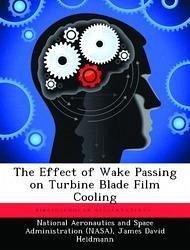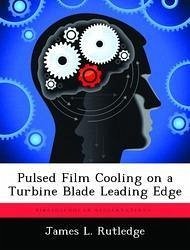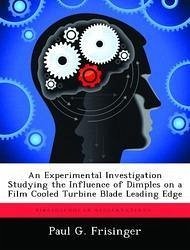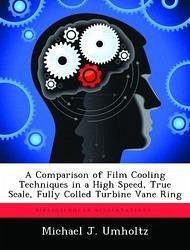Nicht lieferbar

The Effect of Wake Passing on Turbine Blade Film Cooling
Versandkostenfrei!
Nicht lieferbar
The effect of upstream blade row wake passing on the showerhead film cooling performance of a downstream turbine blade has been investigated through a combination of experimental and computational studies. The experiments were performed in a steady-flow annular turbine cascade facility equipped with an upstream rotating row of cylindrical rods to produce a periodic wake field similar to that found in an actual turbine. Spanwise, chordwise, and temporal resolution of the blade surface temperature were achieved through the use of an array of nickel thin-film surface gauges covering one unit cell...
The effect of upstream blade row wake passing on the showerhead film cooling performance of a downstream turbine blade has been investigated through a combination of experimental and computational studies. The experiments were performed in a steady-flow annular turbine cascade facility equipped with an upstream rotating row of cylindrical rods to produce a periodic wake field similar to that found in an actual turbine. Spanwise, chordwise, and temporal resolution of the blade surface temperature were achieved through the use of an array of nickel thin-film surface gauges covering one unit cell of showerhead film hole pattern. Film effectiveness and Nusselt number values were determined for a test matrix of various injectants, injectant blowing ratios, and wake Strouhal numbers. Results indicated a demonstratable reduction in film effectiveness with increasing Strouhal number, as well as the expected increase in film effectiveness with blowing ratio. An equation was developed to correlate the span-average film effectiveness data. The primary effect of wake unsteadiness was found to be correlated well by a chordwise-constant decrement of 0.094-St. Measurable spanwise film effectiveness variations were found near the showerhead region, but meaningful unsteady variations and downstream spanwise variations were not found. Nusselt numbers were less sensitive to wake and injection changes. Computations were performed using a three-dimensional turbulent Navier-Stokes code which was modified to model wake passing and film cooling. Unsteady computations were found to agree well with steady computations provided the proper time-average blowing ratio and pressure/suction surface flow split are matched. The remaining differences were isolated to be due to the enhanced mixing in the unsteady solution caused by the wake sweeping normally on the pressure surface.












